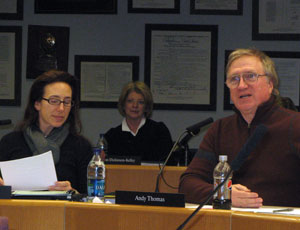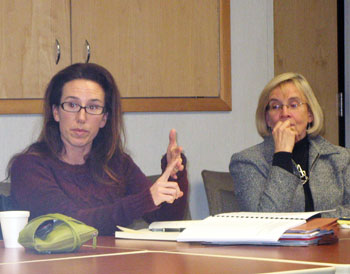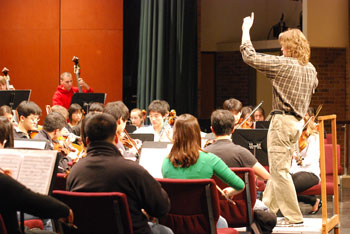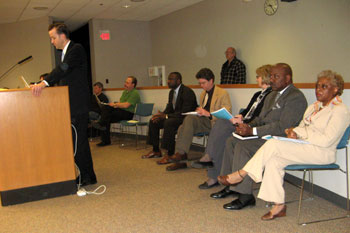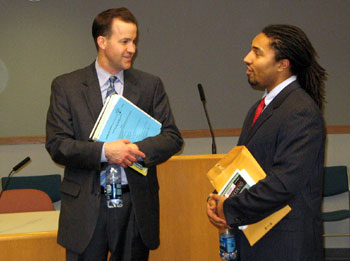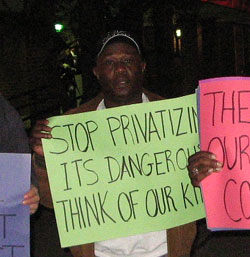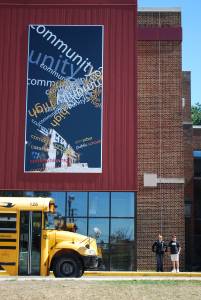On May 27 at Mitchell Elementary School, 30 people gathered in a room. The group included a school psychologist, four school board members, a social worker, four school principals, four teachers, a pastor, the president of the local chapter of the American Civil Liberties Union, an education researcher, and representatives of local community-based organizations.

Simone Lightfoot, left, and Susan Baskett at the Beyond the Talk meeting at Mitchell Elementary School on Thursday, May 27. (Photos by the writer.)
Sponsored by Ann Arbor Public Schools board trustees Simone Lightfoot and Susan Baskett, the meeting was a follow-up to an event held in late April at the Peace Neighborhood Center. At that event, the College and Career-Ready (CCR) Review, AAPS superintendent Todd Roberts and his senior instructional staff had presented a subset of data on student achievement in the district, broken down by race.
The breakdown showed an ongoing difference in test scores between whites and other races. The focus of the May 27 Mitchell meeting, called Beyond the Talk, was on brainstorming around what co-facilitators Lightfoot and Baskett called the elements of a plan to address this issue.
Since April’s CCR Review, the community has seen the Lunch Bunch program at Dicken Elementary School – an initiative intended to address this gap – ended when it was found by the district to violate relevant anti-discrimination laws. The story of parents’ complaints about a Lunch Bunch field trip, which was restricted to black students only, had inflamed controversy that gained national attention.
Depending on your perspective, the Beyond the Talk meeting looked either poorly-attended or well-attended. Early in the evening, one participant commented that African Americans were poorly represented at the meeting, and contended that any efforts to close the gap, however the gap was defined, would be unsuccessful as long as the “apathy” continued.
But Lightfoot declared that work gets done by those who show up to do it. And so they dove into their work.
“Current programs are maintaining the gap, not closing it.” “It’s not the kids – it’s the system.” “The system is not broken. It’s working exactly how it was designed to work.” “People are scared to shake up the status quo. It’s like fighting a war on many, many different fronts.”
Thoughts like these were distilled into bullet points by the end of the meeting, as participants discussed what next steps should be taken to address what has commonly been called the “achievement gap.” [Full Story]





